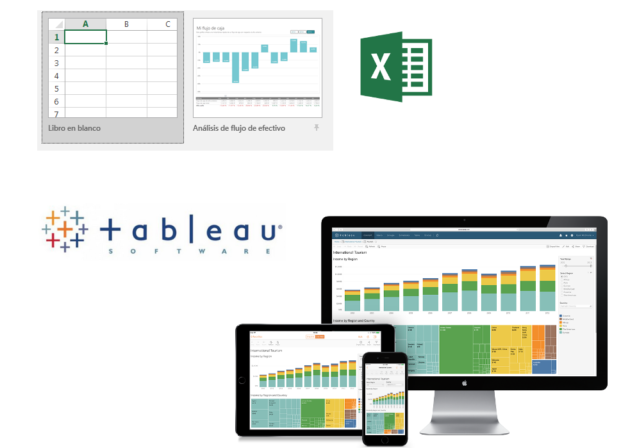Excel vs Business Intelligence: Eight reasons to adopt BI

In our day-to-day lives, we are used to receiving reports and analysing data. This often requires the use of spreadsheets, from which we try to get the most. However, they do not always provide everything we need. What is the solution? “Excel vs. Business Intelligence”.
Information is the oil of the future, as some say; and not without reason. The data we generate in our organisations are increasingly bulky and scattered: they come to us from everywhere. We generate data internally, we get data from suppliers or from the competition. Social media and the Internet have also become important sources of ever more relevant information.
Without being too ambitious, what we generate internally is enough to analyse repeatedly. We store a lot of the data regardless, without transforming it into valuable information that we can consider and use to make business decisions. We are often unable to transform information into knowledge.
Many times, we export specific data from our databases or from our ERP (which is also a DB, really) to spreadsheets and, using techniques that are rather complicated, we get everything we can out of them. But it is not always enough.
What can we do then? Filters, formulas, dynamic tables, charts that are more or less interactive and advanced… For manufacturers, such as Microsoft (for example), Excel has become the user interface of choice when it comes to getting more out of other business solutions. However, despite the power of this tool (which is considerable), it also has certain limitations.
The most important drawbacks of using Excel instead of Business Intelligence
What do we mean? Well, Excel spreadsheets are far from a real analysis and reporting solution. These are some of the most significant drawbacks encountered when using Excel vs Business Intelligence:
- In the first place, you usually lose the benefit of real time. Spreadsheets are static tools. They were perhaps useful yesterday after a more or less laborious export process, but they will no longer be of use within a week (or within a few minutes), you will have to export the source data once again manually. Or you may need to use macros to automate part of the task, but that requires knowledge and time.
- An additional complication when using Excel is the consolidation of information from different sources. A task that is not easy, in fact often impossible; a clear disadvantage when comparing it with a Business Intelligence tool, which includes this premise from the beginning.
- Then we have the idea that a spreadsheet is no good for planning, forecasting, and preparing complicated reports. Can you prepare them? Although never to the level of a Business Intelligence tool, yes, you can; but it takes too long.
- In addition, with other tools (we are thinking about Tableau, we can’t avoid it) you will be able to create data-based visualisations much more rapidly – from the beginning, in fact. And create new reports and new perspectives in substantially less time.
- Discovering patterns, trends, detecting correlations and displaying them all on dashboards (panels) is an extremely complex task with spreadsheets, although you can insert charts based on the data provided.
- Don’t forget that spreadsheets are “standalone” tools and that sharing information with others is quite a challenge. You can do this through e-mail by sharing large documents and even different versions of the same document. With Business Intelligence solutions like Tableau, this is not necessary: the information is up-to-date and accessible to the relevant people at all times.
- Accessibility from mobile devices is very limited and sometimes non-existent or inconvenient in a world in which these devices are increasingly used for work.
- One final but very important aspect that is often overlooked: Excel spreadsheets have poor security levels regarding access control and filtering policies, unlike the role definition possibilities of Tableau.
If you would like further information on these issues and witness the surprising results that a real data analysis tool can provide, join our free webinar on 15 November. “Everything your Excel spreadsheets don’t tell you”


